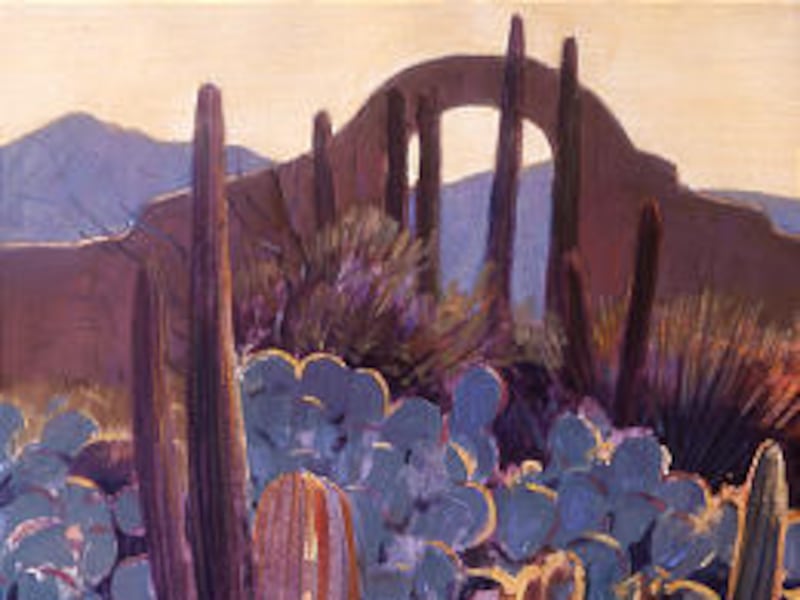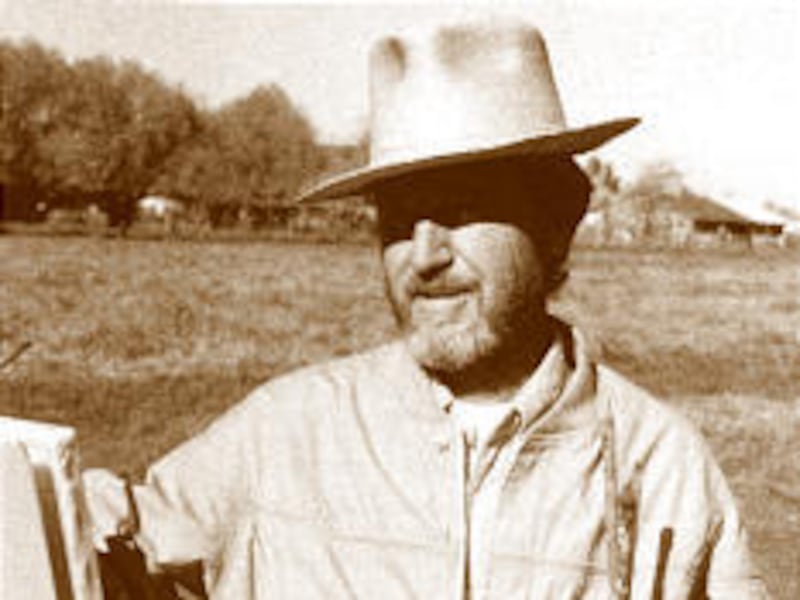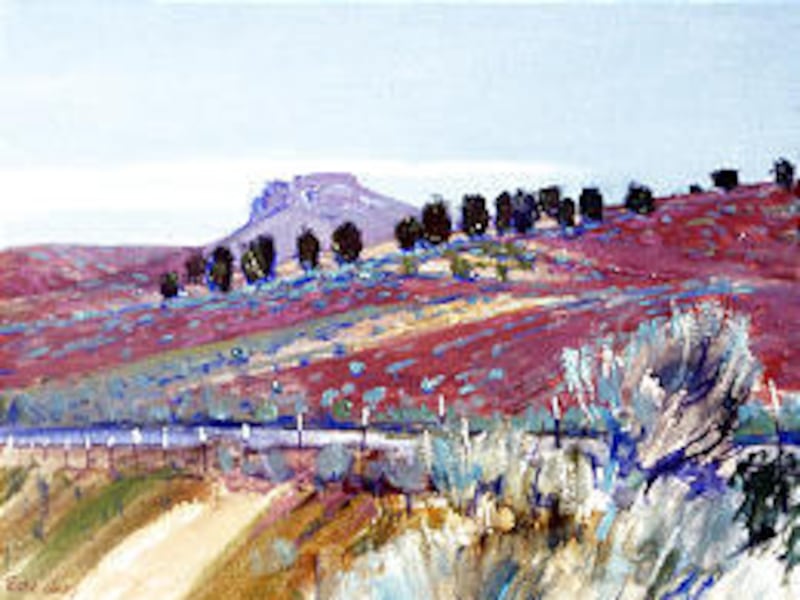With his 30-year retrospective of paintings, drawings and sculpture at the Kimball Art Center in Park City, Utah native Earl Jones shows us — once again — why he is considered a shining star in the pantheon of Utah artists.
Since the early '70s Jones has produced art that married the traditional with the contemporary through a mastery of technique and medium.
"This is going to be a big show," the artist said in a recent interview. "I've really emptied my racks to do this." Jones has also borrowed pieces from private collectors and businesses to give the show added depth.
A fifth-generation Utahn, Jones was born in Salt Lake City in 1937 and grew up in Ogden. In the fall of 1955, he moved back to Salt Lake to study art at the University of Utah.
"I started out as a rather traditional figurative painter," Jones said. "I studied with Alvin Gittins." Later he began working with fellow student Doug Snow "and got kind of interested in abstraction." Then his interest turned to Western rural landscape.
"LeConte Stewart had a lot to do with me painting landscapes," said Jones. "But it was kind of a metamorphosis for me." The artist had always been embarrassed by the provinciality of Utah, but, over time, he decided he had nothing to be ashamed of. "In fact," he said, "my pioneer heritage was something I was proud of. I started painting old homesteads, looking up places where my ancestors had lived."
Jones also began searching out other artists who painted the West "the way I felt about it, the way I saw it, which put LeConte Stewart right at the top of the list, along with Maynard Dixon."
From 1964-70, Jones was a faculty member of the U.'s art department. He protested the university's research in chemical warfare during the Vietnam War. He was later denied tenure.
To this day Jones believes his protesting was just an excuse used by the department to let him go. "I think what they were really upset about was my return to a traditional approach to landscape," the artist said. "That's interesting, isn't it?"
At first, Jones tried to find a faculty position out of state. "But I finally decided that I wasn't going to be chased out of Utah." The artist couldn't conceive of leaving the beauty of the Intermountain West. "This was my home," he said. "I didn't really want to leave."
Along with 30 years of landscapes, visitors will encounter Jones' figure studies. "I've told people I try to stick to the important things: mountains and women," he said. From the first day of Gittins' figure drawing class, where Jones had the opportunity to work from a nude model, he has been addicted to the figure. "I just find it endlessly fascinating; putting a nude into a rectangle, and deciding what to do with all the leftover space." While his paintings of the figure are good, they are basically conventional. His figure drawings, however, are gestural, rapid sketches brimming with energy and an immediacy viewers will relish.
Whether landscape or figure study, Jones paints with a speed that defies the complexity of the completed image. When outdoors, "I paint very rapidly," he said. "In two hours I'm pretty much finished." At the end of the painting session, he usually brings the work back to the studio where he adjusts a few things.
"I was out in the Ruby Mountains just last week. I got there from Elko early in the morning, and I was going down this gravel road and there was just this wonderful morning view of the mountain, with pasture and sagebrush, and the light and the color were just incredible. I had to really work fast to get it."
When Jones considers the rapidly changing Utah landscape that surrounds him today, a little of the past rebel surfaces.
"The kind of landscapes that I knew and was familiar with is rapidly disappearing," he said. "And if it isn't disappearing, it's being dotted by some monster mansion that shouldn't be there. I have a lot of paintings of places that virtually don't exist anymore."
Jones said he used to be able to paint within 30 minutes in any direction of Salt Lake City, "but I can't do that anymore. It takes a lot more driving."
At 67, Jones is very productive, generating some of the best work of his long career. "I'm aware of certain phases in my art over the last 30 years, but I haven't given them names." Instead, he just continues to work, which is what all great artists do.
If you go
What: Earl Jones Retrospective
Where: Kimball Art Center, 638 Park Ave., Park City
When: Through Aug. 13. Gallery hours: 10 a.m.-5 p.m. Monday and Wednesday-Friday; Saturday and Sunday, noon-5 p.m. Closed Tuesday.
How much: Free
Phone: 435-649-8882
E-mail: gag@desnews.com




